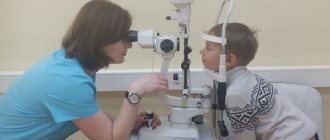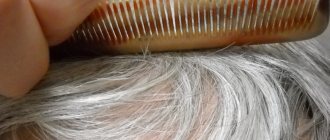Call now!
Dose determines both the poison and the medicine, and this rule applies to almost all types of herbs, medicinal plants and drugs. Originally used as a therapeutic agent, marijuana (cannabis) has become one of the most commonly used substances, gaining increasing popularity.
In Russia, marijuana, including medical marijuana, is classified as a narcotic substance and is prohibited by law. A person who uses medical marijuana for any purpose, or who is involved in its storage and sale, is subject to criminal liability on the territory of the Russian Federation. ATTENTION! The article is for informational purposes only and is not propaganda of narcotic substances.
Authors of the article:
1. Igumnov Sergey Aleksandrovich, doctor of medical sciences, professor, psychiatrist-narcologist.
2. Korensky Nikolay Valerievich, General Director of the Center for Mental Health and Anonymous Help Mypsyhealth - Mypsyhealth in Moscow, psychiatrist-narcologist.
REAL GOOGLE REVIEWS
REAL REVIEWS ON YANDEX SERVICES
REAL REVIEWS ON YANDEX MAPS
Data
· The use or possession of cannabis is prohibited in Russia.
· By far the most common way to take cannabis is to smoke it
· The substance in cannabis that causes the intoxicating effect is called delta-9-tetrahydrocannabinol, or THC for short.
· Cannabis addiction develops.
· Early treatment of cannabis addiction is quite effective.
What is cannabis
Hemp is an annual plant first found in Central Asia and later spread throughout the world. It contains the drug delta-9-tetrahydrocannabinol or THC, which belongs to the group of cannabinoids.
But cannabis was not always considered a drug. For example, its type of cannabis sativa contains a small amount of THC. Until the end of the 60s of the 20th century, this variety was grown in Russia. It was used to make clothing, ship rigging, oil and rope.
Now in Russia and a number of other countries, hemp is an illegal drug. And all this happened because of the so-called Indian hemp (cannabis indica), which contains a large amount of THC. From this type of plant they produce a huge amount of drugs, such as hashish, anasha, marijuana, hashish oil.
Literature:
- Malko A.V. Anti-drug policy of modern Russia: dictionary-reference book / [ed.-comp. A. V. Malko, I. N. Konovalov, N. A. Frolova and others; edited by A. V. Malko, I. N. Konovalova]. — 2nd ed., revised. and additional — Moscow: Prospekt, 2021. — 351 p.
- Zakirova V. M. Drug addiction and drug policy: anti-drug educational programs in schools: monograph / V. M. Zakirova; Federal Agency for Education, State. higher educational institution prof. education Bashkir state univ. - Ufa: Bash State University, 2006. - 171 p.
- Grinspoon L. Marijuana: The Forbidden Drug / Lester Grinspoon, James B. Bakalar; [Transl. from English M.V. Krivenyuk]. — M.: Ultra. Culture, 2003 (Ekaterinburg: GIPP Ural.rabochy). — 427 p.
Signs of cannabis addiction
A person is considered dependent on cannabis use if one or more of the following symptoms occur:
· Decreased mental abilities resulting in problems with work or study.
· Financial problems due to frequent purchases of “weed”.
· Irritability leading to conflicts with family and friends.
· Increased need for smoking cannabis.
· Sleep problems, mood swings without cannabis.
If a person exhibits the following symptoms, the couple should seek help from a specialist and get advice on drug addiction treatment.
For what diseases is marijuana used?
First of all, hemp preparations are used for severe diseases that are not amenable to traditional treatment:
nausea and vomiting after radiation and chemotherapy;- cachexia;
- anorexia during antiretroviral therapy for HIV infection;
- epilepsy;
- convulsive syndrome;
- mental disorders in incurable patients;
- Parkinson's, Alzheimer's, Tourette's diseases;
- chronic pain;
- migraine;
- multiple sclerosis;
- post-traumatic syndrome.
Medical marijuana is prescribed only when necessary, in the absence of contraindications and full monitoring of patients.
Is it legal to use cannabis?
In Russia it is prohibited to use, grow, store and distribute cannabis.
· Growing hemp of less than 20 bushes is subject to administrative liability in the form of a fine of 1.5 to 4 thousand rubles, or arrest for 15 days. If the number of bushes grown is more than 20, then this is punishable by up to 8 years in prison.
· use is punishable by a fine of up to 5 thousand rubles or arrest for 15 days.
· For possession of cannabis weighing more than 6 grams, a fine of up to 40 thousand rubles, correctional labor for up to two years or imprisonment for up to three years is imposed. If the weight of cannabis found is more than 100 grams, then they are imprisoned for up to 10 years. And if hemp is found in especially large quantities, the prison term increases to 15 years.
But distribution of cannabis is punishable only by imprisonment for a term of 4 to 20 years, depending on the amount of the drug found.
Ways to use cannabis
Typically, hemp is mixed with tobacco and the mixture is stuffed into cigarettes. Then they smoke it.
But besides this, there are special devices for smoking hemp. It's either a chillum or a bong.
A chillum is a straight hollow tube, usually made of glass, clay or metal.
A bong looks like a flask with two branches. Water is poured inside, tobacco or marijuana is placed in one branch, and smoked from the other branch.
Cannabis can also be added to food. Most often, muffins or cakes are prepared with it.
Some users add cannabis to milk, boil the mixture, and then drink it. In common people this drink was called “manyaga”.
Synthetic cannabis
Due to the prohibition of cannabis in many countries, smoking mixtures, or “spice” in other words, began to appear in 2004. This heavy synthetic drug was presented as an analogue of cannabis. But as it turns out, spice has terrible consequences. People who use it become extremely addicted and cause irreparable damage to their health.
With the advent of this drug, the number of suicides and fatal overdoses has increased. Spices are produced in the form of solutions. Absolutely any plant is moistened with it and then smoked.
The worst thing is that since 2004, the composition of “spice” has changed several times and continues to change.
Why older people turn to medical marijuana
The trend toward medical marijuana use among older adults is on the rise. From 2006 to 2013, cannabis use among older adults in the United States increased by 250 percent.
We looked at the reasons why medical marijuana may be beneficial for the health of older adults. Let's look at a few more reasons why pensioners resort to it:
It is safer and more economical: As we noted above, medical marijuana is often a safer alternative to prescription drugs (opioids and antipsychotics) and has far fewer severe side effects. It is also more affordable. Older Americans spend an average of about $3,000 a year on prescription drugs. And the average person across the country spends about $650 a year on medical marijuana. It is immediately clear which option is more economically attractive.
Why not try it?: Some older adults have chronic pain so severe that over-the-counter or prescription medications don't always help. Therefore, as a last resort, they sometimes turn to medical marijuana and find positive results. For example, a woman named Reba Goodman said that her pain reached a breaking point when she stopped resisting marijuana. “I felt like I was in heaven,” she said of the relief, noting that she stopped using marijuana once the pain went away but could easily return to it if needed.
Kerry Stiles takes cannabis. Photo: CBS NEWS.
Helps with sleep: Some older adults have found that medical marijuana can replace sleep aids that are not always effective. Nursing home resident Kerry Stiles, 78, wears a pacemaker and says taking cannabis drops under his tongue before bed helps him sleep. The same goes for 95-year-old Alice, who suffered from insomnia before turning to medical marijuana.
Effect after consuming marijuana
After smoking a marijuana cigarette, the effects of the drug begin within 10 to 60 minutes. Drug intoxication lasts about 2-4 hours.
A person who smokes experiences the following symptoms:
· Blood pressure rises, pulse increases.
· There is a feeling of euphoria and lightness.
· Increases appetite.
· Mood improves. He becomes sociable and cheerful.
But if the user drank alcohol before taking the drug, then the signs of drug intoxication intensify in the opposite direction. That is, the person becomes irritable, aggressive and dangerous to others.
Sources
- Faber R., Heling KS., Steiner H., Gembruch U. Doppler ultrasound in pregnancy - quality requirements of DEGUM and clinical application (part 2). // Ultraschall Med - 2021 - Vol - NNULL - p.; PMID:33906258
- Grauso L., de Falco B., Lucariello G., Capasso R., Lanzotti V. Diterpenes from Euphorbia myrsinites and Their Anti-inflammatory Property. // Planta Med - 2021 - Vol - NNULL - p.; PMID:33906246
- Lagrutta L., Sotelo CA., Estecho BR., Beorda WJ., Francos JL., González Montaner P. . // Medicina (B Aires) - 2021 - Vol81 - N2 - p.143-148; PMID:33906130
- Khoujah D., Cimino-Fiallos N. The geriatric emergency literature 2021: COVID and beyond. // Am J Emerg Med - 2021 - Vol44 - NNULL - p.177-183; PMID:33905980
- Stetter J., Boge G.S., Grönlund U., Bergström A. Risk factors for surgical site infection associated with clean surgical procedures in dogs. // Res Vet Sci - 2021 - Vol136 - NNULL - p.616-621; PMID:33905955
- Adusei KM., Ngo TB., Sadtler K. T Lymphocytes as Critical Mediators in Tissue Regeneration, Fibrosis, and the Foreign Body Response. // Acta Biomater - 2021 - Vol - NNULL - p.; PMID:33905946
- Hodge S., Greaves N., Murray D. The use of bovine pericardial patches in vascular surgery: where do we draw the line in obtaining informed consent? // Ann Vasc Surg - 2021 - Vol - NNULL - p.; PMID:33905843
- Yu J., Li W., Zhao L., Qiao Y., Yu J., Huang Q., Yang Y., Xiao X., Guo D. Quyu Shengxin capsule (QSC) inhibits Ang-II-induced abnormal proliferation of VSMCs by down-regulating TGF-β, VEGF, mTOR and JAK-STAT pathways. // J Ethnopharmacol - 2021 - Vol - NNULL - p.114112; PMID:33905820
- Buxbaum J., Qumseya B., Wani S. Toward an evidence-based approach for cholangitis diagnosis. // Gastrointest Endosc - 2021 - Vol - NNULL - p.; PMID:33905719
Psychological effects of cannabis
After repeated drug use, a person’s psyche comes under attack. At first, this is expressed only in increased irritability and decreased mood. But with systematic use of the drug, the following symptoms occur:
· The level of intellectual development decreases several times.
· Nervousness and irritability appear.
· Apathy develops, interest in life disappears. This leads to depression.
· Various paranoias develop.
· Panic attacks occur.
· Dependence develops.
But in addition to the detrimental effect on the psyche, serious harm is caused to the body.
Glaucoma
Glaucoma is the leading cause of blindness in people over 60 years of age. This disease is associated with increased fluid pressure in the eye and damage to the optic nerve. For years, doctors have prescribed glaucoma eye drops that help relieve pressure in the eyes. Smoking a marijuana cigarette has also been shown to reduce eye pressure for three to four hours.
According to “An Honest Look at Glaucoma and Marijuana,” a website dedicated to eye doctors in Oregon (where medical marijuana is legal), to combat glaucoma, patients need to reduce the pressure in their eyes throughout the day. Therefore, eye drops may be more effective (you will have to smoke marijuana several times a day). Among the factors that speak in favor of using medical marijuana instead of drops for glaucoma, the doctor names the issue of price and personal preferences.
Hemp. Photo: Pixabay.com.
The effect of the drug on the body
A person who uses drugs daily is visible at first glance. He has a “glassy” look, slow, inhibited speech, he cannot focus his attention on any object or question, his face becomes “haggard.”
Then there are serious health problems:
· The cardiovascular system weakens. Namely, the condition of blood vessels worsens, which leads to poor circulation and low blood pressure. The risk of developing heart attacks and strokes increases.
· Possible development of bronchitis, asthma, lung and upper respiratory tract cancer.
· The nervous system ceases to function normally. This leads to psychosis, convulsions and constant trembling of the upper and lower extremities.
· In men, sperm quality is impaired, and in women, the menstrual cycle is disrupted. Possible development of infertility.
Contraindications and possible consequences
When using cannabis in medicine, you should be aware of its side effects and contraindications. With long-term use, various health problems may develop, such as:
- tumor diseases of the lungs;
- Chronical bronchitis;
- worsening cardiovascular pathologies;
- deterioration in concentration, memory, impaired thinking;
- decreased sperm count, menstrual irregularities and reproductive problems.
While taking cannabis, you should not drink alcoholic beverages as you may experience drowsiness, dizziness, and impaired coordination and judgment. It is not recommended to drive vehicles, work using machines or perform manipulations that require attention, concentration and correct assessment of the situation. Do not use medical marijuana during pregnancy and breastfeeding, or if there is a history of psychosis. The development of many side effects can be provoked by impurities of other substances if hemp of dubious origin and non-medical grade, with a high content of tetrahydrocannabinol, was used.
How harmful is marijuana?
Humanity has been using cannabis for centuries. And they took it not to get a “high”, but to treat various diseases.
Therefore, experts have come to the conclusion that during the first period of constant drug use there is no harm to the human body.
But with further systematic use, the detrimental effect will definitely be. For some it occurs faster, for others slower. This depends on the age of the user, his state of health, genetic factors, and the presence of chronic diseases.
Interestingly, cannabis produces a narcotic intoxication not only in the person who smokes, but also in those who are in the same room with him.
Pregnant women should absolutely not smoke weed. The drug will have an irreparable detrimental effect on the fetus. Typically, such women give birth to small children. In the future, they experience weakened intelligence, lags behind their peers, and serious health problems. It is even possible to develop various defects.
PsyAndNeuro.ru
Although the medicinal properties of cannabis* have been known for thousands of years, research into its potential applications in neuropsychiatry began to gain momentum in the 1990s with the discovery of the endocannabinoid system in the brain. This discovery has led to speculation that cannabis may play a therapeutic role in regulating the dopamine, serotonin and other neurotransmitter systems and become a new treatment for various diseases.
* The materials in this article are for informational purposes only. On the territory of the Russian Federation, tetrahydrocannabinols (all isomers) and their derivatives are included in List I of narcotic drugs, psychotropic substances and their precursors, the circulation of which in the Russian Federation is prohibited in accordance with the legislation of the Russian Federation and international treaties of the Russian Federation, approved by Government Decree No. 681 of June 30, 1998 ( translator's note)
At the same time, efforts to legalize cannabis have seen success in a number of countries, including the United States, where 36 states now allow some form of cannabis access. These two parallel paths—medical and political—have made cannabis a more accessible part of modern culture. However, this has forced doctors to face new challenges: medical cannabis has become widely available to patients, but today there is insufficient clinical data on how and for what indications it should be used.
The Cannabis sativa plant contains more than 100 compounds, including terpenes, flavonoids, and—most importantly for medicinal purposes—cannabinoids. The most common cannabinoid is delta-9-tetrahydrocannabinol (THC), which has psychotropic properties and can cause euphoria. The next most common cannabinoid is cannabidiol (CBD), which is not psychotropic. THC and CBD are the most studied cannabinoids. Evidence suggests that other cannabinoids and terpenoids may also have potential for medicinal use, and that different cannabis compounds may work synergistically to enhance each other's effects.
Cannabis-based medicines may contain different variants of plant-based and synthetic cannabinoids, vary in the ratio of THC to CBD, and in the route of administration (e.g., smoke, vapor, oral, topical, or oral spray), and the routes of administration may vary. have a significant effect on the final effect of the drug. Further complicating matters is the varying level of control each state and country has regarding how cannabinoid content and possible contaminants are tested and labeled.
Prescription cannabis-based medicines undergo a formal registration process and are assigned indications and contraindications. To date, the US Food and Drug Administration (FDA) has approved one cannabis-based drug, Epidiolex (purified CBD), for the treatment of seizures associated with Lennox-Gastaut syndrome and Dravet syndrome in children over 2 years of age. years. The FDA has also approved three drugs containing synthetic cannabinoids: Marinol, Syndros (or dronabinol), and Cesamet (or nabilone - also a synthetic cannabinoid similar to THC) - all of which are indicated for iatrogenic nausea and anorexia in patients with AIDS.
Surveys of patients receiving cannabis-based medications indicate that most do not differentiate between THC and CBD, so the primary role of physicians recommending this treatment may be to educate patients about the variety of different cannabinoid options, both plant-based and synthetic.
Chronic pain is one of the main reasons patients turn to medical cannabis. A number of experts agree with this. “In my opinion, the most promising area of application for medical cannabis, particularly THC, is pain management,” Diana M. Martinez, MD, a professor of psychiatry at Columbia University in New York City who specializes in addiction research, said in a recent interview on the MDedge podcast. “THC could be added to the arsenal of painkillers used today.” Some evidence shows that chronic pain patients treated with medical cannabis can reduce their opioid use by more than 60%.
In a 2015 systematic review of the literature, researchers assessed 28 randomized controlled trials (RCTs) of cannabinoid use for chronic pain. They reported that use of various cannabis-based formulations resulted in a ≥30% reduction in the likelihood of pain compared with placebo. A meta-analysis of five RCTs in patients with neuropathic pain showed a 30% reduction in pain compared with placebo with inhaled cannabis vapor.
The ongoing epidemic of opioid addiction gives these findings additional relevance. Data shows that patients with chronic pain who are treated with cannabis-based medications can reduce their opioid use by more than 60%, as noted above. Convinced of this, Mark Steven Wallace, MD, a pain management specialist at the University of California, San Diego, reconsidered prescribing cannabis to his patients. “Based on my personal experience, these drugs have a much lower risk of abuse and addiction than opioids,” says Wallace. “We found an interesting pattern that when combined with CBD, the psychoactive effects of THC are significantly reduced. The ratios we use in the daytime range up to 20 mg CBD and 1 mg THC,” he said.
In a recent secondary analysis of an RCT of patients with diabetic polyneuropathy with pain, Dr. Wallace and colleagues found that the effects of THC were dose-dependent. “As THC levels rise, pain decreases, but pain begins to intensify as THC levels reach 16 ng/ml,” says Dr. Wallace. “Even recreational cannabis users report avoiding high doses because... this can cause an aversive reaction. The tactics for prescribing cannabis-based drugs boil down to slow titration, starting with small doses.”
To date, there are relatively limited and conflicting data on the use of medicinal cannabis for neurological pathologies. Besides pain management, the strongest evidence for the therapeutic effects of cannabis-based drugs is in epilepsy, according to Daniel Friedman, MD, assistant professor of neurology at Dell Medical School, Austin, Texas. It. These results led to the 2021 FDA approval of Epidiolex for the treatment of the above syndromes. In turn, according to the results of a 2017 review of medical cannabis conducted by the US National Academies of Sciences, Engineering, and Medicine (NASEM), there was insufficient evidence of effectiveness for these indications based on subsequent RCTs. Clinicians prescribing CBD for these two indications should consider possible interactions with other commonly used antiepileptic drugs.
The use of cannabinoids has also shown some success in relieving muscle spasticity in multiple sclerosis. In Europe (but not in the US), an oral spray called Nabiximol (Sativex) containing approximately equal amounts of THC and CBD is approved. At the same time, patients themselves rate the effectiveness of the drug as a rule higher than clinicians.
Cannabis-based drugs have not yet received formal indications for the treatment of Parkinson's disease, but growing preclinical evidence suggests that cannabinoids may influence the dopaminergic system. “In general, cannabinoids modulate the function of the basal ganglia in those neurotransmitter systems that are particularly important in Parkinson’s disease, namely glutamatergic and dopaminergic,” reports Carsten Buchmann, MD, from the department of neurology at the University Medical Center Hamburg. Eppendorf, Germany. “In addition, activation of the endocannabinoid system may have neuroprotective effects, induce activation of anti-inflammatory cascades in glial cells through the cannabinoid receptor type 2 and anti-glutamatergic anti-excitoxic properties.” However, Buchmann reports that there are currently only four double-blind, placebo-controlled RCTs involving only 49 patients. These studies used different cannabinoids in different dosage forms. Significant improvement was observed in only one of these RCTs, in which the cannabinoid receptor agonist nabilone significantly reduced levodopa-induced dyskinesia in patients with Parkinson's disease, which was confirmed by the patients themselves. Overall, subjective benefits are reported by the majority of medical cannabis users: in a national survey of 1,348 respondents by Buchmann and colleagues, 54% of patients receiving oral CBD and 68% of inhaled THC users reported improvement.
NASEM concluded that there is insufficient evidence to date to support the effectiveness of medical cannabis for other neurological conditions, including Tourette's syndrome, amyotrophic lateral sclerosis, Huntington's disease, dystonia or dementia. A 2021 report from the American Academy of Neurology (AAN) also cited a lack of robust clinical research as a reason why cannabis products are not currently considered as a therapeutic option for neurological disorders. However, according to Friedman, who co-authored the statement, this has not stopped research interest in the topic of medical cannabis. He states that there has been a significant increase in research on CBD for various neurological diseases over the past 2 years: “the number of studies is growing, and no one seems to care about the negative results.”
A number of conditions, such as anxiety, depression and post-traumatic stress disorder (PTSD), are the most common reasons why patients seek medical cannabis. Preclinical studies show that the endocannabinoid system plays an important role in modulating the emotional background, regulating feelings of anxiety and fear. Just as in the case of treatment of chronic pain, the combined use of opioids and cannabinoids may reduce the dose and duration of use of narcotic analgesics, there are suggestions that medical cannabis may significantly reduce the use of prescription anxiolytics and reduce the risks associated with their use.
A meta-analysis showed a small but positive association between cannabis use and reduction in anxiety, although this may only reflect a tendency for cannabis use in individuals with underlying anxiety. Given the risks of substance use disorders among patients with anxiety, CBD may become an alternative anti-anxiety medication. Positive results from its use have also been shown in the treatment of generalized social anxiety disorder. Limited but encouraging results have also been reported for the relief of PTSD symptoms with the use of both THC and CBD, although the body of high-evidence work has not progressed markedly since 2021, when NASEM declared that the evidence for the use of cannabinoids for PTSD was insufficient. There is also a lack of data regarding the benefits of cannabinoids in the treatment of depression. In contrast, longitudinal studies suggest that cannabis use may increase the risk of developing this disorder. Because THC is a psychoactive substance, it should be avoided in patients at risk of developing psychotic disorders.
Using medical cannabis to treat mental illness requires a complex, measured approach, as these treatments may only worsen the problems they are intended to alleviate.
Martha Di Forti, MD, professor of psychiatry at King's College London, United Kingdom, is working to understand the link between the use of cannabis derivatives and the risk of psychosis in the clinic she founded in 2021. Di Forti and her colleagues associated an increased risk of developing a psychotic disorder in daily cannabis users compared with never users of cannabinoids. This risk was further increased among users of potent cannabis (≥10% THC). The latest discovery is particularly relevant because THC concentrations in cannabis derivatives have been steadily increasing since 1970.
“For those prescribing medicinal cannabis with a THC concentration of ≥10%, I would be particularly cautious about the risk of developing psychosis,” Di Forti said. “If daily use of drugs with high THC content is intended for therapeutic purposes, this potential side effect must be taken into account.”
Di Forti noted that her results were obtained from a cohort of recreational cannabis users aged 18 to 35 years. "There really haven't been any studies done in groups specifically using cannabis for medicinal rather than recreational purposes," she said. She added that when prescribing medicinal cannabis, it is important for clinicians to be aware of the risk of developing psychosis, carefully identify risk factors and family history, and be vigilant for the often subtle signs of its early onset. Di Forti continues that if cannabis-related psychosis occurs, it is treated with conventional means such as antipsychotics, symptomatic therapy, and abstinence from cannabis use. Achieving the latter goal can be a challenge for patients who use potent cannabis on a daily basis because... There are currently no treatment regimens similar to those offered to patients quitting alcohol or opioids. Di Forti and her colleagues are exploring a solution to this problem through the use of medical cannabis in the form of an oral spray, Sativex, which has been approved in the European Union.
The lack or limited evidence for the use of medical cannabis to treat neuropsychiatric conditions highlights the regulatory challenges in conducting quality research in this area.
Since 1970, cannabis has been a Schedule I prohibited drug (the Agricultural Improvement Act of 2018 removed such restrictions on cannabis). The FDA has issued guidance for researchers studying treatments using Cannabis sativa or its derivatives that contain >0.3% THC. Conducting such research requires regular interaction with several federal agencies, including the Drug Enforcement Administration. “It is difficult to conduct multicenter RCTs with large numbers of patients due to the inability to transport cannabis across state lines,” says Dr. Wallace. Also, regulatory restrictions on medical cannabis vary significantly from country to country. Lack of consistency in regulatory oversight has hampered large-scale international multicenter studies on this topic.
Dr. Buchmann noted that in Germany, cannabis has been approved for the treatment of drug-resistant conditions with severe symptoms that impair the patient's quality of life. In addition, these drugs can be obtained at a discount. These factors impede the funding of high-quality research: “it is likely that no pharmaceutical company will conduct an expensive RCT to register a new drug for Parkinson's disease, because there is already a sufficient selection of TSN-containing drugs in a variety of dosages and dosage forms.”
In the face of such limitations and obstacles, researchers are turning to large-scale real-world clinical data projects to gather information about the effectiveness and safety of medical cannabis. A prominent example is the Twenty21 project, which is supported by the Royal College of Psychiatrists and in which researchers are collecting results from the use of medical cannabis from 20,000 British patients with traditional treatments for chronic pain, anxiety, epilepsy, multiple sclerosis, PTSD, use disorders PAS, and Tourette's syndrome, etc. were not successful.
Dr. Friedman O.
Source
Translation: Scheidegger Yu.M.
First stage
Intoxication is removed , that is, cannabinoids are removed from the human blood. This is done using droppers with various solutions prescribed by the doctor.
When intoxication is particularly pronounced and a person’s kidneys cannot cope with the elimination of toxins and stop “working,” then a hemodialysis session is performed, this is a procedure in which extrarenal removal of toxins occurs using a special device.
Or a plasmapheresis procedure is performed. During it, a person’s blood, using special equipment, is cleared of plasma contaminated with toxins and poured back into the body.
Second phase
With the help of medications, the body is brought out of the state of withdrawal syndrome and the functioning of the affected body systems is normalized. At this stage, hormonal drugs are most often prescribed.
Eating disorders
Eating disorders are much more common among older adults than many realize. In the United States, almost 80 percent of deaths due to anorexia occur among older people.
With age, older people may lose the desire to eat for physiological and/or psychological reasons: due to dissatisfaction with their body, due to bad teeth or poorly fitting dentures, low physical activity, while taking medications with side effects such as appetite suppression.
Inadequate nutrition, in turn, causes and/or accelerates the progression of chronic diseases common in old age, such as osteoporosis, arthritis, and cardiovascular diseases. Either way, medical marijuana can help older adults improve their appetite and get out of the dangerous weight zone.
Research has shown that patients with anorexia and bulimia have a dysfunctional or underutilized endocannabinoid system in the body, which essentially causes the brain to perceive food as something undesirable. Medical marijuana can stimulate this system and help the brain see the pleasure in eating again.
Eating disorders are often treated with antidepressants and antipsychotics, but patients often report worsening symptoms after taking them. Medical marijuana has not yet been considered a treatment for eating disorders. But many doctors view it as a safer alternative with far less risky side effects than prescription drugs.
Third stage
Working with a psychologist. Depending on the severity of drug addiction, the doctor works with the patient individually or prescribes group sessions. In especially severe cases, hypnosis sessions are performed.
No matter how it may seem that cannabis is not at all dangerous or harmful, in reality it turns out differently. This drug can destroy a person's life in an instant. In addition, with the advent of synthetic analogues, people who use drugs can lose the most important thing, namely their lives.
If a person or his relatives notice a drug addiction, they should immediately seek qualified help .
How can medical marijuana support the brain?
Not only can medical marijuana provide benefits in the treatment of various physical illnesses and mental disorders, but it can also have a positive effect on brain function in older adults.
A study conducted at the University of Bonn in Germany examined how low doses of THC affected the cognitive abilities of the brain in young, mature and elderly mice. As is often the case in young people, tetrahydrocannabinol slightly inhibited cognition in young mice. But when it was administered to two older groups of mice, they performed better on cognitive tests than younger rodents who were also given THC. Before its introduction, older generations of mice performed significantly worse on tests.
Although similar experiments have obviously not been conducted in humans, the results of this study are an interesting building block in the study of medical marijuana as a means of helping to increase cognitive performance in older adults, which often declines greatly as we age. The scientists' next step is to look at how our internal cannabinoid system responds to THC and how consuming it can help re-stimulate cognitive function, said lead researcher Andreas Zimmer.
The idea is that as animals, like humans, age, the activity of the endogenous cannabinoid system decreases, and this coincides with signs of brain aging, Zimmer explained. “So we thought, 'What if we stimulate the system by supplying it [from the outside] with cannabinoids?'
Because cannabis is not considered a dangerous drug in Germany, researchers can receive government funding to study the effects of THC on cognitive performance in people.
Helpful information
Find out:
- Synthetic cathinones : what kind of drug it is, how it affects the human body and what plants contain its analogue.
- How the psychotropic drug LSD and why, when overdosed, a person behaves inappropriately and can harm himself or others.
- Why are cocaine and crack illegal, and what is the effect of using these drugs?
- What is amphetamine and how quickly does its use cause addiction?
- How ecstasy and the dangers of using it in large quantities.
Content:
- Medical cannabis
- For what diseases is marijuana used?
- Contraindications and possible consequences
- Medicinal effects of cannabis
- Cannabis in medicine: methods of use
In some countries in Europe and North America, the use of cannabis for medicine is allowed. It is used as an antiemetic in cancer patients undergoing chemotherapy, and as an appetite stimulant for wasting syndrome caused by AIDS. In the UK it is used to treat muscle spasms in multiple sclerosis. From 2021 in Poland, it can officially be used to treat seriously ill patients. In Israel, the cultivation of medical cannabis is classified as an agricultural activity.










